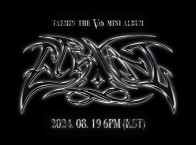ZeroGPT AI Detection Tool: What Writers, Students, and Editors Need to Know
- (Photo : Freepik)
ZeroGPT is an online AI-content detector tool that uses the proprietary DeepAnalyse™ algorithm to analyze text and estimate whether it's human-written or AI-generated (e.g., by ChatGPT, Bard, or GPT-4). Beyond detection, it offers extras like paraphrasing, summarizing, grammar assistance, translation, and plagiarism checking—making it useful for writers, educators, students, and editors requiring authenticity verification and content optimization.
Background on ZeroGPT
Founded in Iceland in 2023, ZeroGPT operates as an unfunded startup focused on AI tools. Initially known for high-accuracy detection (reported 98%+ accuracy on over 10 million texts), the company has expanded into an all-in-one writing suite—leveraging its DeepAnalyse™ framework across tools to serve global users.
Market Needs
With the rise of AI-generated text, concerns over plagiarism, authenticity, and academic integrity have intensified. For content creators, there's a demand for a dependable defense against AI misuse. Writers and educators seek tools that quickly verify whether text is genuinely human-created and maintain high standards of originality.
How ZeroGPT Addresses the Need
ZeroGPT provides instant AI-detection via a simple web interface: paste text or upload files, and receive an "AI percentage" score within seconds. A free tier handles up to 15,000 characters per check, with paid tiers boosting limits up to 500,000 characters and removing ads . Additional tools—paraphrasing, grammar, translation—enhance value for users editing flagged content or improving writing after detection.
Pros and Cons
Advantages
• High claimed accuracy: ZeroGPT reports detection accuracy of over 98%, powered by its proprietary DeepAnalyse™ algorithm. This model is trained on millions of samples across various domains to identify patterns typical of AI-generated text. While internal benchmarks show strong performance, real-world results may vary depending on the complexity and length of the input.
• Free tier availability: The platform allows users to analyze up to 15,000 characters per check without needing to sign up. This free access makes it an attractive option for students, freelance writers, and educators looking for a fast, no-obligation way to screen content for AI influence.
• All-in-one content toolbox: ZeroGPT offers more than just detection. It includes grammar checking, paraphrasing, summarization, translation, and even citation formatting. This suite of tools supports a smoother writing and editing process, saving users time and helping maintain content originality without switching between different apps or websites.
• Multilingual capability: The detection engine and other tools are designed to work in multiple languages, supporting users around the world. This makes it a helpful solution for international educators, global teams, or non-English-speaking students working with multilingual content.
• Manual-friendly interface: ZeroGPT's web interface is designed for ease of use. Users simply paste or upload their content, click detect, and receive a percentage breakdown indicating the likelihood that the text was written by AI. It requires no technical knowledge, making it approachable for a wide range of users.
• Privacy focus: User trust is supported by a clear privacy stance: ZeroGPT does not store, reuse, or train its models on submitted texts. This ensures that sensitive or proprietary information remains confidential, especially important for academics, journalists, legal professionals, and students.
Disadvantages
• Accuracy limitations: Despite its high claimed accuracy, independent studies and real-world user feedback indicate inconsistent performance. Detection rates often fall to 35–65%, especially when evaluating edited or naturally written human text. This gap highlights the challenges of applying a generalized detection model to diverse writing styles and content types.
• False positives and negatives: ZeroGPT has been shown to wrongly classify human-written content as AI-generated and vice versa. This is especially problematic for non-native English speakers, whose writing may be flagged as AI due to grammatical irregularities. It also struggles to detect content that has been rephrased using tools like QuillBot, resulting in false negatives.
• Ads in the free interface: While the free version is functional, it is ad-supported. Frequent pop-up or banner ads may interrupt workflow, distract users, and give the platform a cluttered feel. This can be frustrating for regular users or those working under time constraints.
• Lack of advanced analysis: ZeroGPT provides only a basic probability score with no deeper insights. It lacks features like sentence-by-sentence scoring, source tracing, confidence levels, or suggestions for rewriting flagged content. Additionally, there is no available API for those who want to integrate detection into existing platforms or automate analysis.
• Inconsistent reliability: Feedback from Reddit threads, blog reviews, and testing communities suggests ZeroGPT's detection results can be unpredictable. Users describe it as "hit or miss," "inconsistent," and even "untrustworthy" when used on nuanced or paraphrased text. This undermines confidence, especially when the tool is used in educational or professional settings where stakes are high.
Product's Competitive Edge
Comparing features typically found in AI detectors—like AI percentage scores, multilingual compatibility, integrated writing tools, and privacy compliance—ZeroGPT stands out for bundling multiple tools in one platform. Its free tier and simple UI lower the barrier for casual users. However, its reliability lags behind enterprise tools, especially in rigorous academic settings where false positives can have serious implications .
Frequently Asked Questions
1. How accurate is ZeroGPT?
ZeroGPT claims over 98% accuracy using its DeepAnalyse™ algorithm. However, independent testing shows real-world accuracy ranges between 35 and 65%. The tool can produce both false positives and negatives, especially with complex or edited content. It's best used as a preliminary filter, not a definitive AI detection tool.
2. Can it detect paraphrased AI text?
No, not reliably. When AI-generated content is reworded using paraphrasing tools like QuillBot or Undetectable.ai, ZeroGPT often fails to flag it. This limitation affects most AI detectors due to the reduced pattern signals. Users should combine detection with human judgment for paraphrased or subtly edited texts.
3. Is it free?
Yes, ZeroGPT offers a free tier with a 15,000-character limit per check and no required signup. This makes it ideal for light or occasional use. For users handling larger volumes or needing faster processing, paid plans offer expanded limits, ad-free access, and batch detection options for added convenience.
4. Can ZeroGPT be trusted in academic settings?
Not entirely. While helpful for quick checks, its tendency to misclassify non-native English writing as AI-generated limits its reliability in educational contexts. Many institutions recommend avoiding standalone reliance on AI detectors like ZeroGPT when making academic decisions due to the risk of incorrect assumptions or unfair penalties.
5. Does it support multiple languages?
Yes, ZeroGPT can analyze text in various languages. However, accuracy is highest in English. In other languages—especially those with complex grammar or less training data—detection quality may drop. For multilingual use, results should be interpreted cautiously and supported by manual review or secondary tools when available.
Conclusion
ZeroGPT offers a user-friendly, accessible entry point to AI-detector tools—complete with free usage, integrated writing utilities, and strong privacy assurances. Its DeepAnalyse™ algorithm and multilingual capabilities meet basic augmentation needs for casual writers, students, educators, and editors. However, real-world accuracy flaws—especially false positives and negatives—mean it shouldn't be used as a definitive tool. Pairing it with manual review or additional detection platforms is wise, especially in academic professions or professional publishing.
If speed, low cost, and ease are your priorities, ZeroGPT provides a useful first pass. Concerned about reliability? Use it only for preliminary screening and double-check flagged items. For robust academic scrutiny or enterprise applications, consider supplementing with more trustworthy, detailed detection services.
Curious how much of your text might be AI-generated? Try ZeroGPT's free detector now—no signup, 15k-character scans, and immediate results. For frequent use or larger documents, consider upgrading to a paid tier to remove ads, access higher limits, and enable batch processing. Don't risk unverified content—use ZeroGPT as your starting point before editing or publishing.














